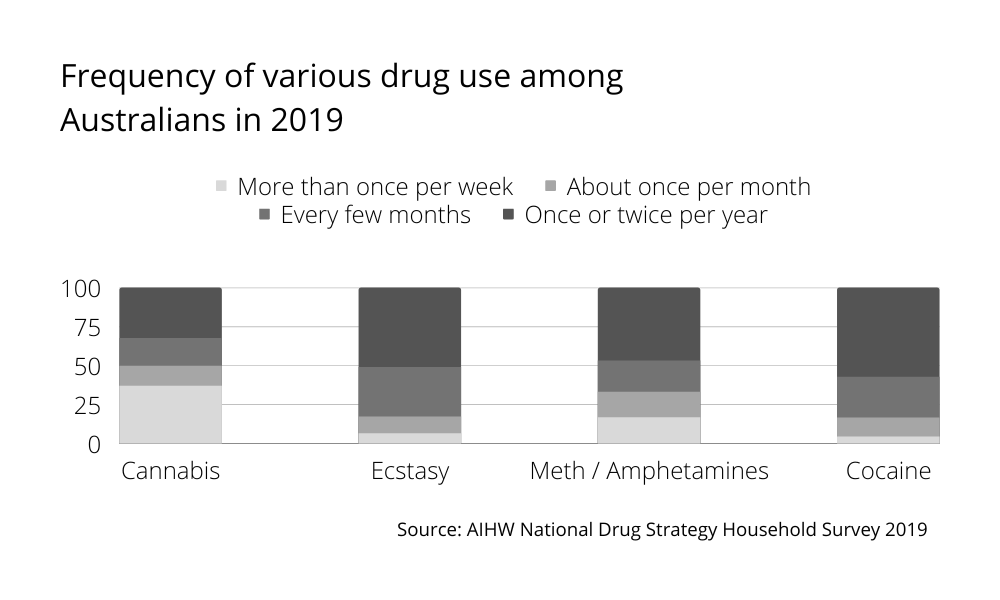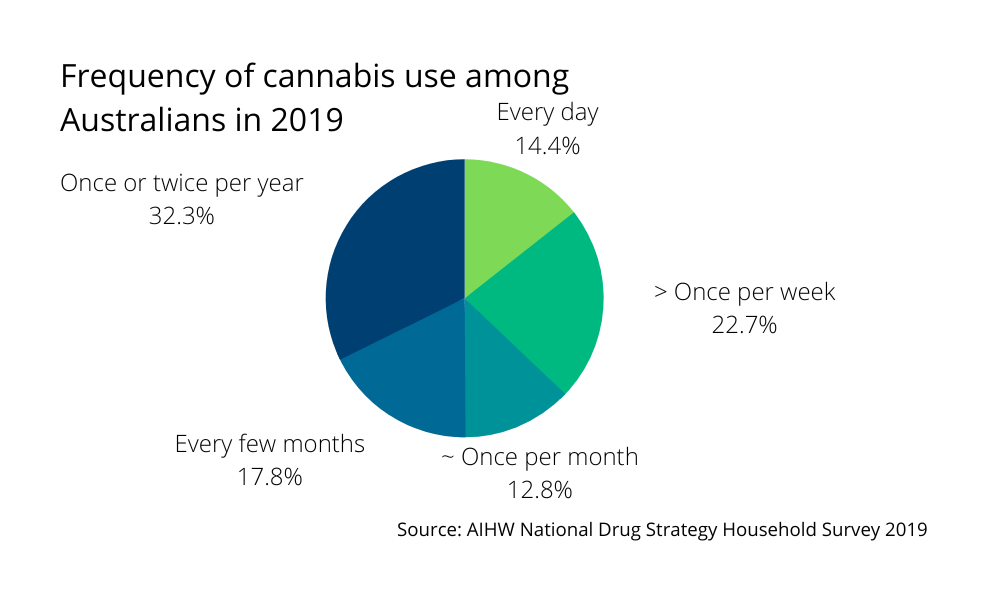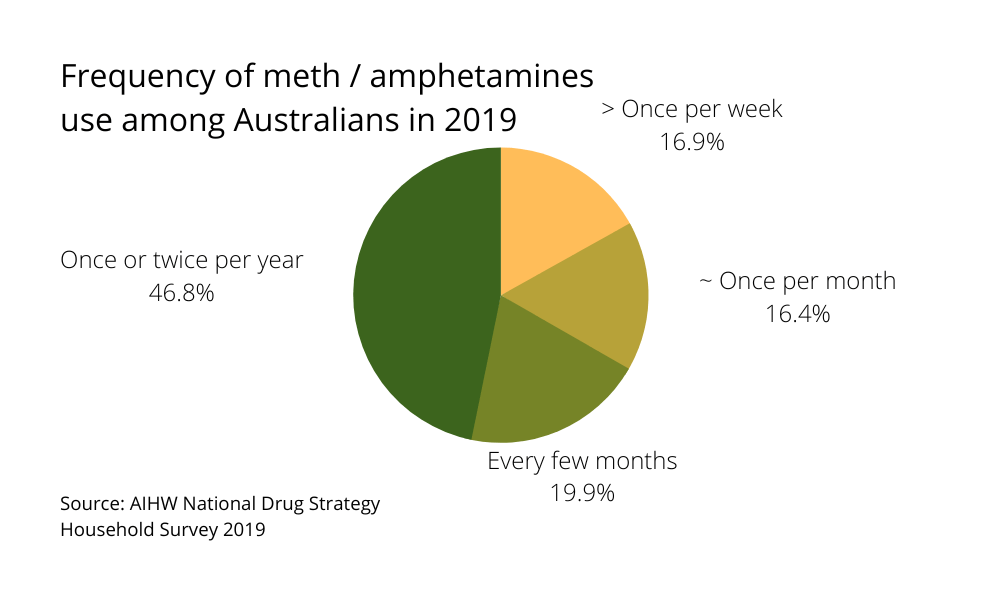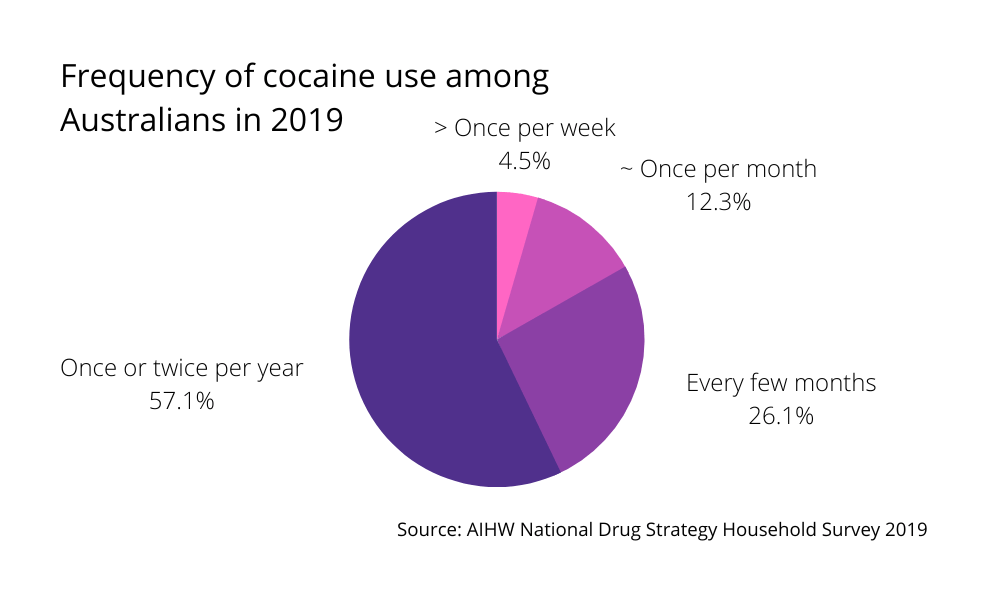Whether for illicit or medical use, drugs can be categorised according to the way they affect the human body — stimulants heighten senses towards the surroundings, depressants have the direct opposite effects of dulling the responsiveness of the nervous system, and hallucinogens distort how a person sees, hears, smells, tastes, and feels things. The 2019 National Drug Strategy Household Survey (NDSHS) shows that about 43% of Australians aged 14 and above had illicitly used a drug at some point in their lifetime. These are some of the most frequently used illicit drugs in the country based on the statistics.

Cannabis
Cannabis is a type of plant that is processed into 3 forms—dried leaves and flowers (also known as marijuana), cannabis resin, and cannabis oil. It is a stimulant, depressant, and hallucinogen all at once, usually ingested, smoked, or heated and inhaled.
As a drug perceived as easy to obtain in Australia, cannabis has the highest prevalence of illicit use compared to other drugs, where more than 35% of users take cannabis on a daily or weekly basis. This is supported by the evidence that half of the national illicit drug seizures were for cannabis in 2019-20 even though cannabis only makes up for about 28% of the total weight of illicit drugs seized, based on the Illicit Drug Data Report (IDDR).

Is synthetic cannabis / K2 a type of cannabis?
Designed to mimic similar effects to cannabis, synthetic cannabis, more commonly known as K2, is not actually derived from cannabis. It is a powdered chemical that is sprayed onto dried plant material and is used in a similar way as cannabis since both cannabis and synthetic cannabis bind to the same receptors in the brain. Thus, it is more accurate to refer to synthetic cannabis as synthetic cannabinoids.
Can drug test kits detect cannabis?
Yes. To investigate one's recent or historical use of cannabis, drug test kits detect the presence of THC (delta-9-tetrahydrocannabinol), the main psychoactive component of the plant, or a collective of unique chemicals known as cannabinoids. These chemicals can be found in both urine and saliva.
Meth / Amphetamines
Amphetamine is a stimulant prescribed to treat attention deficit hyperactivity disorder (ADHD) while methamphetamine is a potent derivative of amphetamine. There are 3 forms of methamphetamine based on their purity:
- Ice, the purest form that looks like white crystals
- Base, a damp substance that is usually white, yellow or brown
- Speed, white or yellow powder which sometimes comes in pills.
As methamphetamines can be produced in backyard labs, they are easy to obtain and contributes to high consumption regionally. Ice is the main form of meth/amphetamine used among Australians since 2013 which makes up 50% of the meth/amphetamine users. People who use ice are more likely to do so more frequently than those that who use the powder form.

Can drug test kits detect amphetamines and methamphetamines?
Yes. Both amphetamines and methamphetamines can be found in urine and saliva. Drug test kits can identify these 2 drug groups separately if their concentrations exceed the cut-off limit.
Ecstasy
Ecstasy, or Methylene DioxyMethAmphetamine (MDMA), is a combination of chemicals that includes amphetamines and some hallucinogens, making it difficult to tell what it actually contains. Sometimes it might not contain any amphetamines or amphetamine derivatives at all. It typically comes in the form of colourful tablets or in powder form.
Between 2019 and 2020, the total weight of national ecstasy seizures was 3,214kg, accounting for 25% of the total weight of amphetamine-type stimulants seized, based on the IDDR. There was a higher proportion of males than females using ecstasy.

Can drug test kits detect ecstasy?
Yes. However, drug test kits might group ecstasy together with methamphetamines and not all drug test kits can test for ecstasy. It would be better to double-check the list of drug groups available for the specific drug test kits used.
Cocaine
Also a stimulant, cocaine is processed from the leaves of the coca plant into 3 different types:
- Cocaine hydrochloride, a white powder most commonly available in Australia
- Freebase cocaine that can be smoked
- Crack cocaine which comes in the form of crystals or rocks.
There is an increase in the number of cocaine detections at the Australian border by 447% between 2010 and 2020, according to the IDDR. This has led to an increase in the number of national cocaine seizures as well, from 662kg in 2010-11 to1,573kg in 2019-20.

Can drug test kits detect cocaine?
Yes. Drug test kits usually identify benzoylecgonine, the main cocaine metabolite in both saliva and urine.
All cannabis, meth/amphetamine, ecstasy, and cocaine are considered illegal drugs under the drug laws in Australia. People are prohibited from possessing, using, making/growing, importing, or supplying these substances in the country due to the adverse impact they cause on the human body and society as a whole. It means that no trace of illicit drugs should be found in your body if random drug testing is conducted, whether at the roadside or in the workplace.





